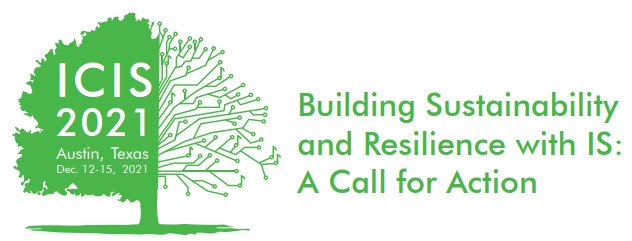IS in Healthcare
Loading...
Paper Number
2641
Paper Type
Completed
Description
Drawing upon computer-mediated theory and hyperpersonal model, this study investigates the interplay of relationships underlying the adoption of telehealth, patient-perceived quality, and specialty risk categories driven by COVID-19. We identify the mechanism of the positive influence of telehealth adoption that different strategies of telehealth adoption (i.e., doctors who adopt telehealth and only accept video visits, doctors who adopt telehealth and accept both video visits and in-person visits, and doctors who do not adopt telehealth) is the driving force for the improvement of patient's perception quality. Further, our empirical results show that the connection between the degree of doctors’ telehealth adoption and patients' perceived healthcare quality is operating through the pandemic phases. Finally, our results suggest that the adoption of telehealth is more beneficial for a doctor with high-risk specialties than in low-risk specialties during the emergence phase of the pandemic outbreak.
Recommended Citation
Lin, Yu-Wei; Ivanov, Anton; Chang, Hsin-Lu; and Shaw, Michael J, "Role of Telehealth Adoption in Shaping Perceived Quality of Care: Empirical Analysis" (2021). ICIS 2021 Proceedings. 22.
https://aisel.aisnet.org/icis2021/is_health/is_health/22
Role of Telehealth Adoption in Shaping Perceived Quality of Care: Empirical Analysis
Drawing upon computer-mediated theory and hyperpersonal model, this study investigates the interplay of relationships underlying the adoption of telehealth, patient-perceived quality, and specialty risk categories driven by COVID-19. We identify the mechanism of the positive influence of telehealth adoption that different strategies of telehealth adoption (i.e., doctors who adopt telehealth and only accept video visits, doctors who adopt telehealth and accept both video visits and in-person visits, and doctors who do not adopt telehealth) is the driving force for the improvement of patient's perception quality. Further, our empirical results show that the connection between the degree of doctors’ telehealth adoption and patients' perceived healthcare quality is operating through the pandemic phases. Finally, our results suggest that the adoption of telehealth is more beneficial for a doctor with high-risk specialties than in low-risk specialties during the emergence phase of the pandemic outbreak.
When commenting on articles, please be friendly, welcoming, respectful and abide by the AIS eLibrary Discussion Thread Code of Conduct posted here.



Comments
17-Health